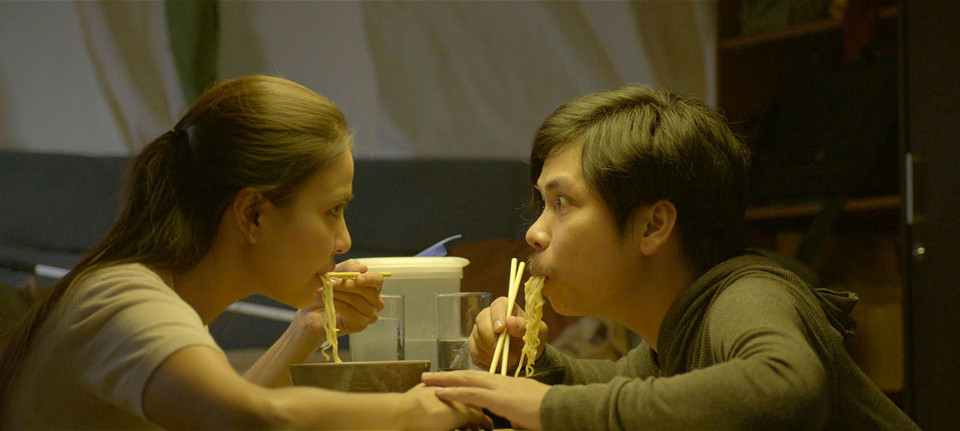
Kita kita (I See You)
 Have you this film? Let us read Alwyne Jan Perez’ film review and let us get some lessons. AJ is the Associate Moderator of Filipino-Chinese Catholic Youth (FCCY) and a Feast Builder of The Feast-SM Lanang.
Have you this film? Let us read Alwyne Jan Perez’ film review and let us get some lessons. AJ is the Associate Moderator of Filipino-Chinese Catholic Youth (FCCY) and a Feast Builder of The Feast-SM Lanang.
* * * * * *
So what’s my take on Sigrid Bernardo’s ‘Kita Kita’? I find it funny to see for the first time that theater goers were silent and not standing up from their seats when the closing credits began to roll. No one was lining up to leave the theater. They just sat there quietly because they never knew what hit them, honestly, so did I. That was not the movie I expected to see, and I guess so were they.
That made the movie beautiful; it’s a movie with many layers. The first layer as a rom-com is “sulit na, winner pa.” Empoy Marquez (surprisingly – noting that we just only know him as the 142nd reincarnation of Rene Requiestas) and Alex De Rossi (surprisingly also – as we have typecast her for heavy drama or antagonistic roles) gave great interpretations of their characters Lea and Tonyo. They delivered all the kilig chops naturally to make the viewers blush and root for their unlikely pairing and chemistry. I’m calling it: They are good actors.
And it helped a lot that the characters they portray were written as very relatable. Let’s face it, not everyone looks like Piolo Pascual but they still deserve to have a love story too. We don’t need pre-existing family problems or have a group of audacious best friends giving advices to make our lives’ love story worthy. This is just a two-person play. In fact, the beer can should have received the third billing.
But the next layers made it surreal. The movie had a Kurosawa-esque (think Rashomon) elements in the movie. Although the kilig factor was doing excellently, this different story-telling technique (for Filipino movies anyway) made the movie a class of its own.
Not to mention the roller-coaster of emotions the movie wants you to feel when you finally realize what the story is really about. You see the movie poster and you hope to see your childish fantasies about love happen on the screen, but as soon as the last scene is flashed, you realize that you were suckered into a hazing ritual about life’s adult realities.
Another great layer of the movie is the dreamy visuals due to the excellent cinematography of the many locations in Japan. Some might even remember a touch of Sofia Coppola’s “Lost in Translation.” (Which coincidentally was shot there as well.)
It’s like a Korean movie mixed with an indie movie vibe in a Japanese visual fest and Pinoy voice and heart. Everybody happy.
Of course there were small plot holes along the way but it could be easily forgiven and overlooked for what the movie is giving. I, for one, am a bit uncomfortable in one of the final revelations because it crosses a thin line between sweet and what can be misconstrued as creepy, oh well, let the debate begin on that.
The beauty of Kita Kita is not experienced inside the movie theater. It is experienced outside the theater when everything sinks in. That’s why you read so much of it in Facebook, the viewers can’t handle the explosion of emotions, they just have to write something about it. Look at me now.
My seatmates were literally crying at various parts of the movie, so bring whatever you wipe your tears with. The one beside me was glancing at me from time to time to see if I was crying too. I didn’t, because I’m crying inside, baby dragonfly.
* * * * * *
Thank you AJ. Until next kwentuhan, higala!


No Comments